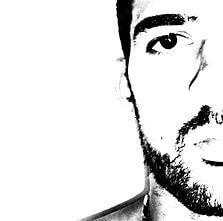
Artist Statement: "I was born on October 5th, 1984 in Cagliari, and even though I earned a high school diploma in surveying I never felt it was my field, and very soon I understood that calculations and straight lines were going to be too boring for me. The pencil, an instrument of torture if utilized in the surveying world, actually became a loyal partner if employed in the arts. I began to draw at a very young age; my first themes were the characters of my favourite cartoons. Then, as years went by, I perfected my techniques (as an autodidact) and began drawing more challenging themes and subjects, slowly abandoning the pastels to concentrate solely on the black and white. It all became a must: colored pastels did not exist anymore, and if I had a blank sheet of paper, the lead of the pencil was the only instrument. I held my first camera just over a year ago. I have tried to utilize colors: red is marvelous, blue is fantastic and green is magnificent. But these feelings did not last, and I just could not to do it anymore. There was nothing to do because my preference for the monochrome has taken over even this time, and I must to succumb to this force without resisting it. I have lost myself and do not wish for anyone to come find me. In my world of black and white there are only two simple colors, but there is also a myriad of shades of grey that I will not let get away."